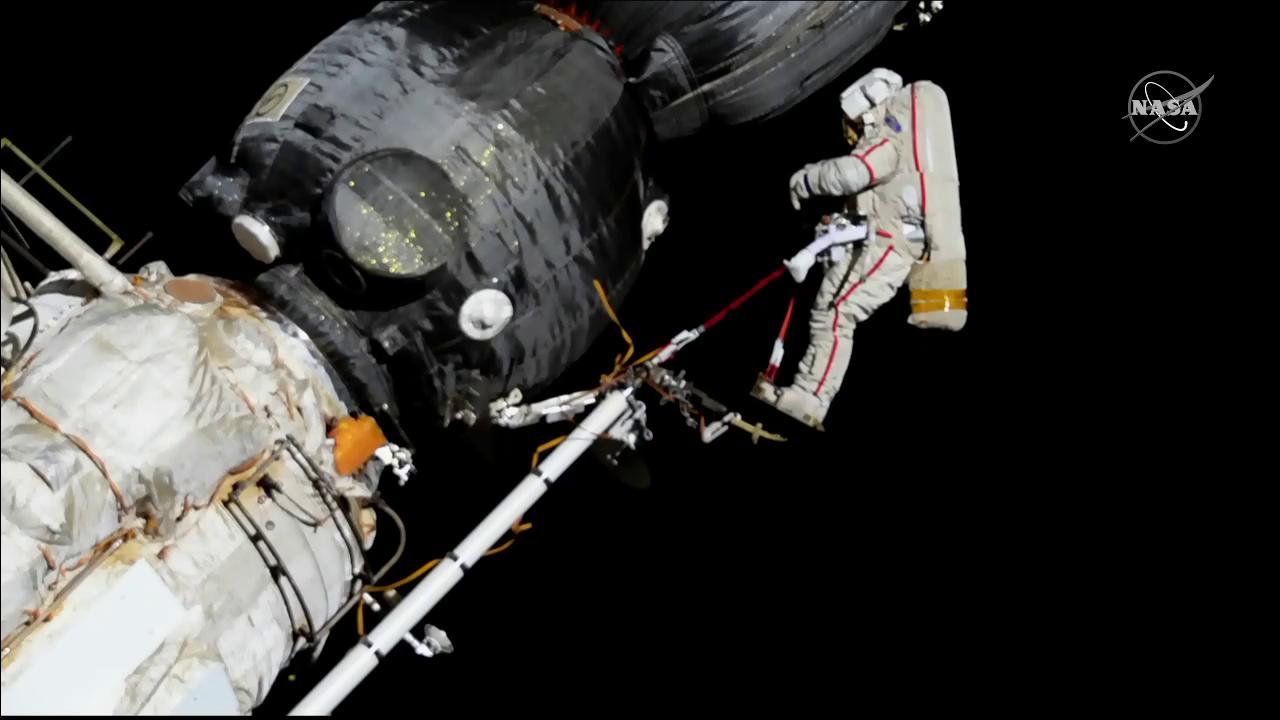
Payload operations are underway aboard the International Space Station as a U.S. cargo craft prepares for its return to Earth at the end of the week. Meanwhile, the Expedition 71 crew continued researching neuroscience and getting ready for the year’s first spacewalk.
The four NASA astronauts in the orbital outpost’s U.S. segment spent the first half of their day packing the SpaceX Dragon spacecraft with science cargo for analysis back on Earth. Flight Engineers Tracy C. Dyson and Matthew Dominick started the day removing research samples from station science freezers and carefully placing them inside Dragon science freezers. Afterward, Flight Engineers Mike Barratt and Jeanette Epps ensured cargo already packed inside Dragon was properly strapped and secured for the flight back to Earth. Dragon is due to undock from the Harmony module’s space-facing port on April 26, weather dependent, and splash down off the coast of Florida the following day.
Afterward, Barratt worked in the Destiny laboratory module and set up a fluorescence microscope then joined Epps and Dominick swapping brain organoid samples inside the optical device. Scientists on the ground remotely operated the specialized microscope viewing the samples to observe the effects of a drug therapy on the brain organoid cultures. Researchers will use the results to study ways protect an astronaut’s central nervous system in microgravity as well as prevent and treat neurological conditions on Earth.
Dyson serviced components and cleaned hardware inside the BioFabrication Facility located in the Columbus laboratory module. The 3D biological printer is being tested for its ability to print organ-like tissues in microgravity potentially enabling space crews to print meals or medicines and allowing doctors to manufacture organs for patients on Earth. Dyson then had her eyes checked as Dominick operated medical imaging gear to view her cornea, retina, and optic nerve.
The next spacewalk at the space station is scheduled for Thursday, April 25. Cosmonauts Oleg Kononenko and Nikolai Chub will exit the Poisk airlock and spend about seven hours configuring hardware and installing experiments on the Roscosmos segment of the space station. The duo spent most of Tuesday reviewing their spacewalk procedures and collecting tools planned for the excursion. The two cosmonauts began the day attaching sensors to themselves measuring their heart activity for a long-running Roscosmos cardiac study.
Flight Engineer Alexander Grebenkin joined his cosmonaut crewmates for the spacewalk procedure reviews on Thursday. He will help the duo in and out of their Orlan spacesuits and monitor the spacewalkers while they work outside the space station.
At the end of the day, Grebenkin joined Dominick, Barratt, and Epps, his SpaceX Dragon Endeavour crewmates, and checked out their Dragon pressure suits and communication systems. The quartet earlier tested a garment that may help crews adjust quicker to the effects of gravity after returning to Earth.
Learn more about station activities by following the space station blog, @space_station and @ISS_Research on X, as well as the ISS Facebook and ISS Instagram accounts.
Get weekly video highlights at: https://roundupreads.jsc.nasa.gov/videoupdate/
Get the latest from NASA delivered every week. Subscribe here: www.nasa.gov/subscribe









